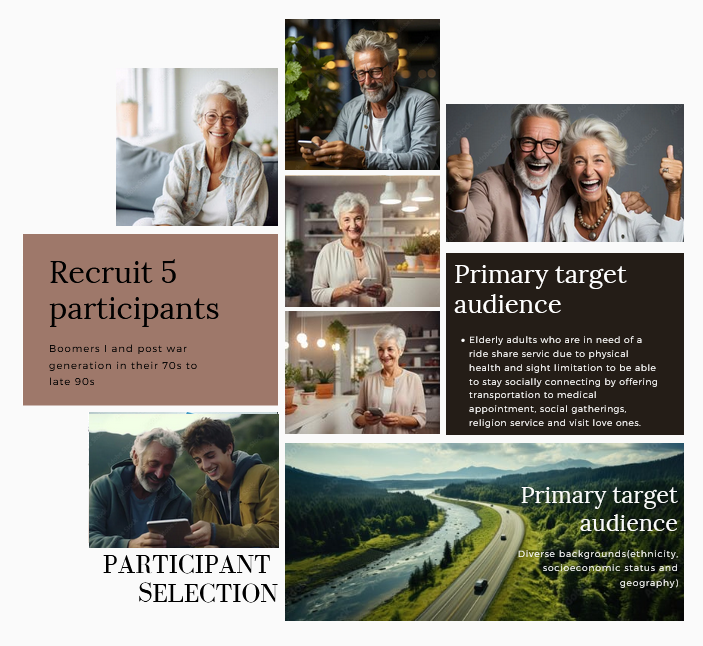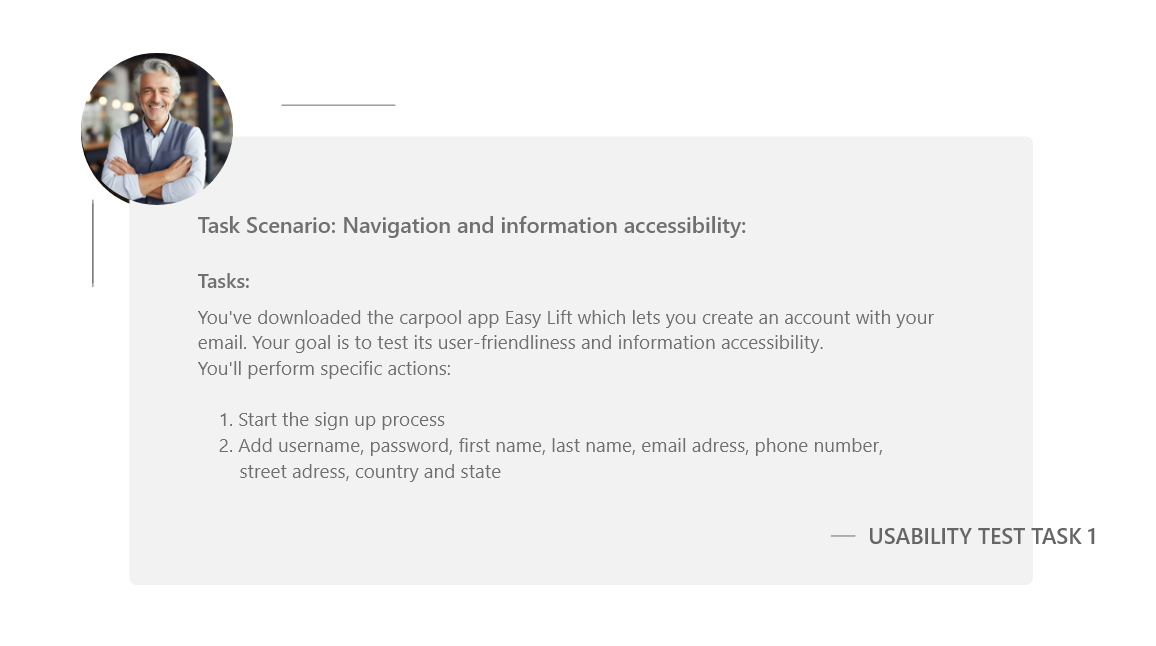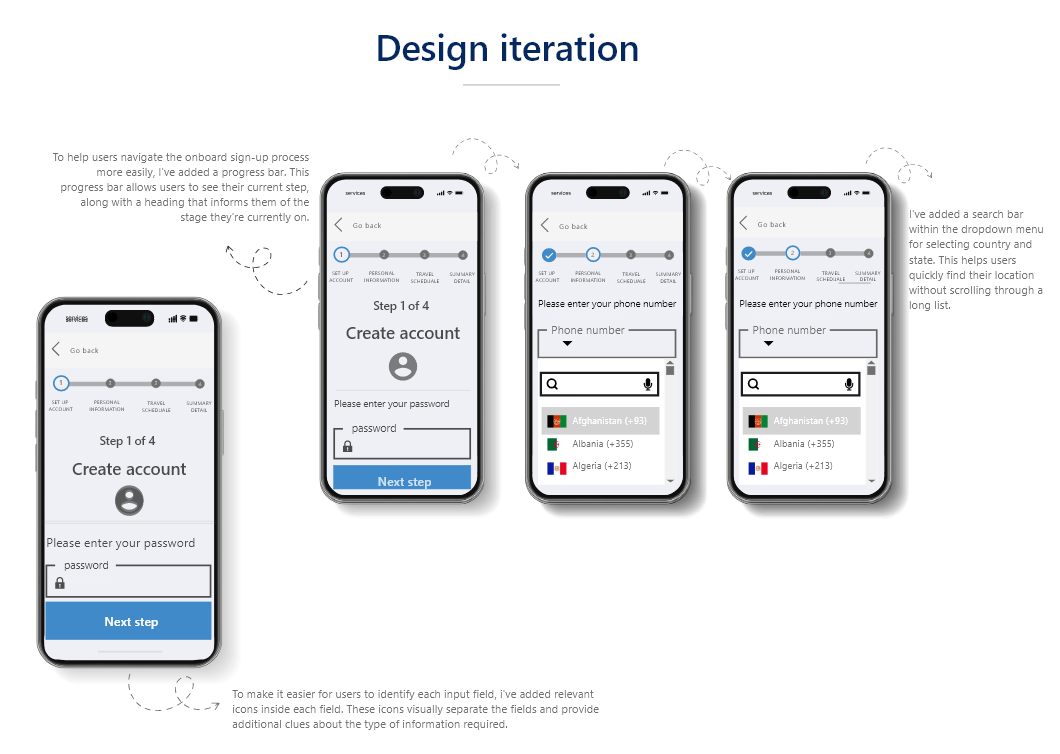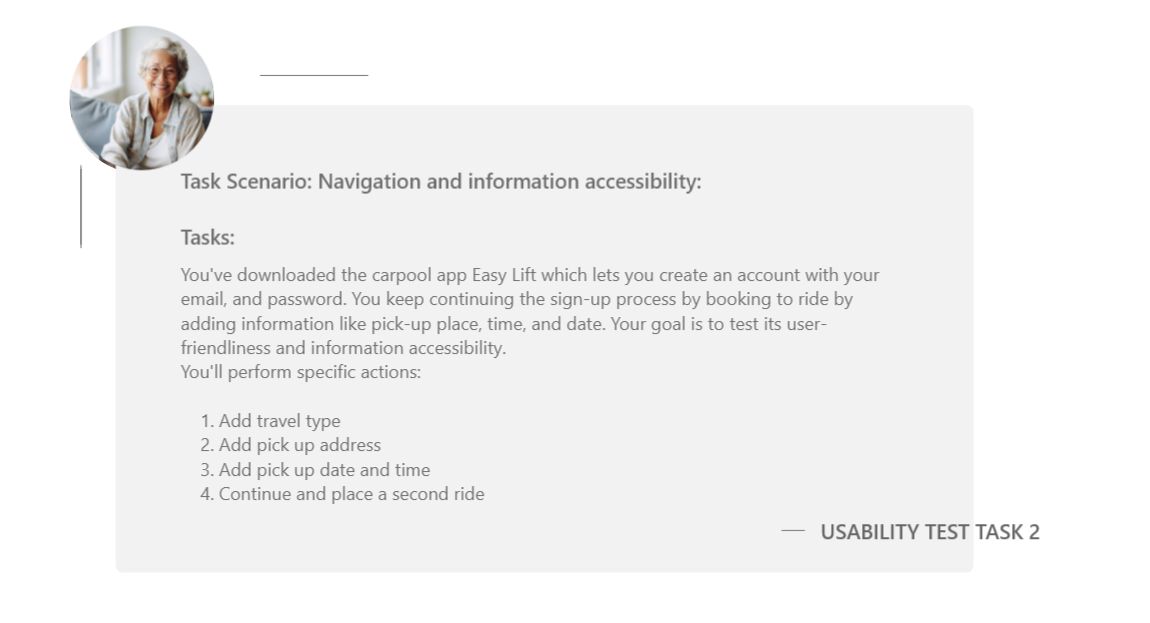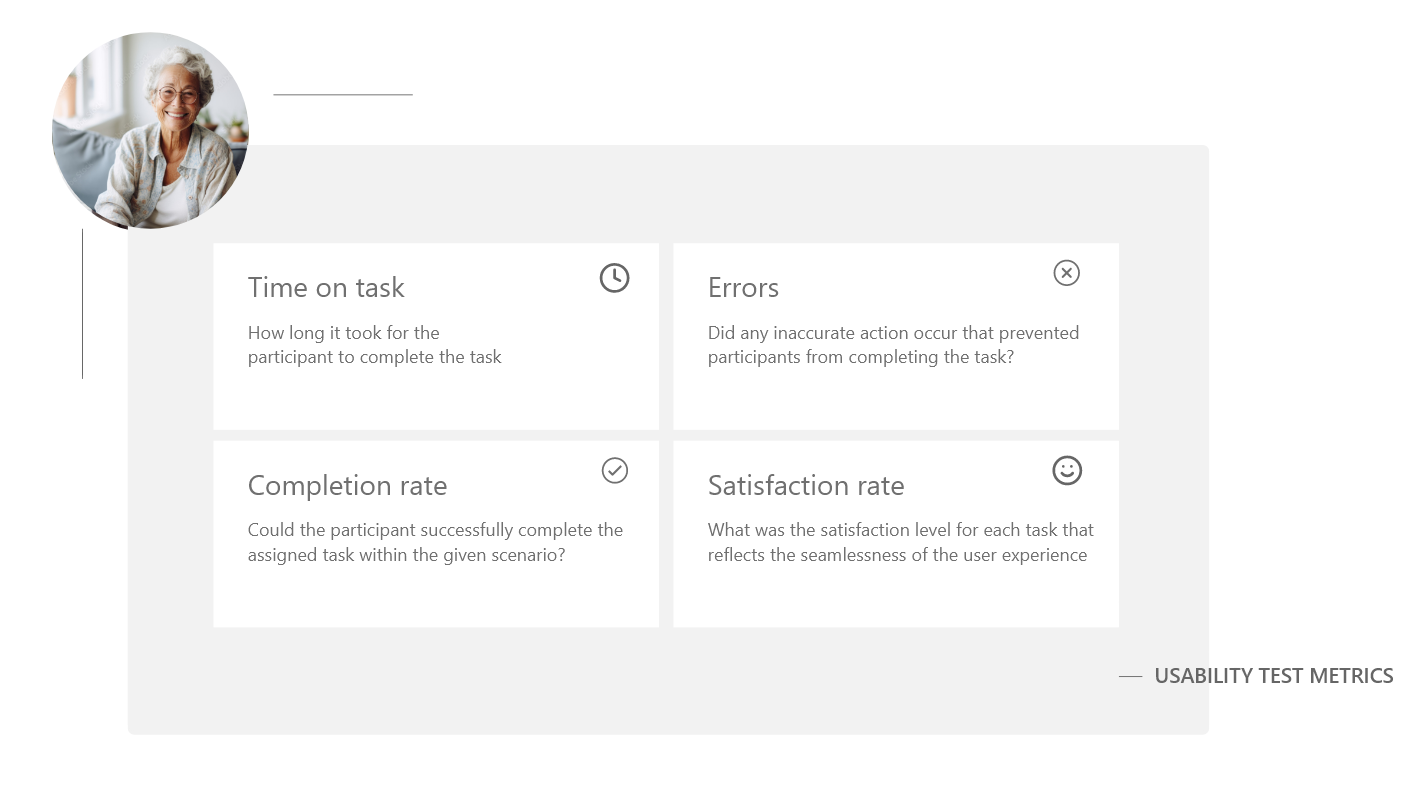Test stage
The "EasyLift" app is currently in the testing phase of the design thinking process. This phase focuses on making sure that the prototype created is user friendly and does not contain any clutter, issue or error when the user is interacting with the prototype during the usability test session. By analyzing how users interact with the app, performance metrics such as task efficiency (success and failure rates), completion time, number of errors, and user satisfaction provide the opportunities for improving the user experience and the interface design based on real data captured. Identifying and eliminating design error and confusion early in the process before moving to the implementation phase is crucial to be able to save time and money. This makes it easier to create a product that are intuitive and user friendlyParticipant selection
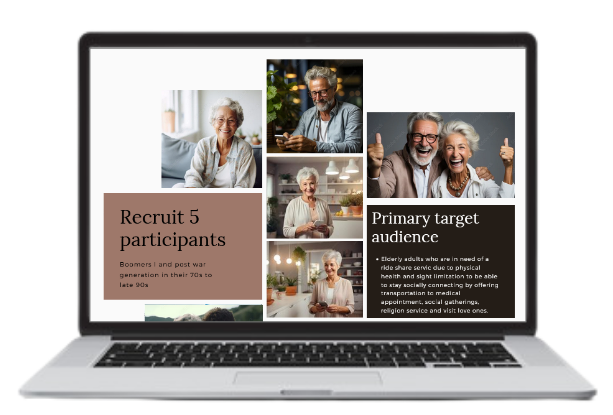
Test
Participant selection
The goal of usability testing is to understand how real users interact with the prototype created by selecting the right participant that matches the core target user of the app which is crucial to get valuable and relevant feedback ... Testing with the correct user makes it easier to identify issues because they accurately reflect the needs, preferences, and behaviors of the app core target audience. Testing with the participants that closes matches the target audience makes sure that the feedback comes from individuals that are likely to use the app. Problem encountered will be refined and make sure that the design better meet the users need
